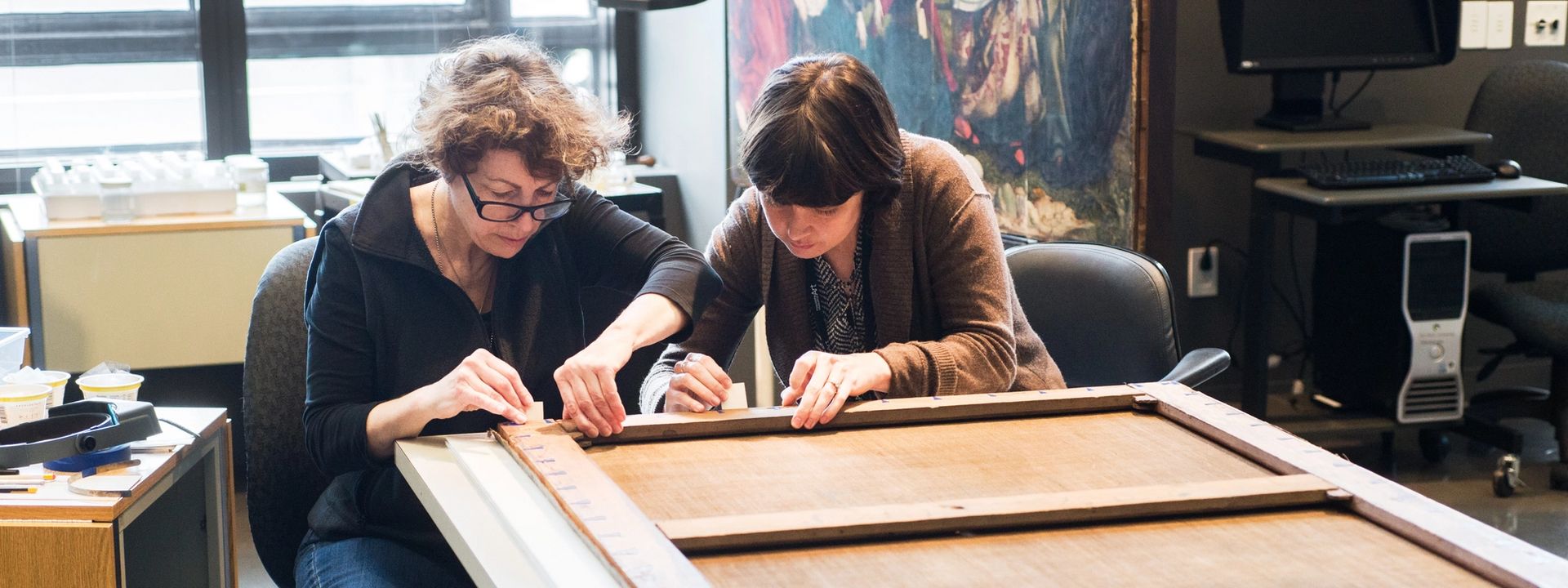From the moment they came to power, the Nazis launched a vicious campaign against art they designated “degenerate,” a category that included all modernist art, especially abstract, Cubist, Expressionist, and Surrealist art. Thus Picasso, Matisse, Klee, Kandinsky, Kirchner, and even nineteenth-century Impressionist and Post-Impressionist artists, including Renoir, Degas, Cézanne, and Van Gogh, were reviled as exponents of avant-garde art movements that were considered intellectual, elitist, foreign, and socialist-influenced. Jewish artists such as Marc Chagall were, of course, singled out for special condemnation. The Nazi government promoted a “true” German art, continuing in the tradition of German nineteenth-century realistic genre painting, that upheld “respectable” moral values and was easy to understand. Hitler’s inner circle also treasured certain Old Masters whom they regarded as expressing the true Aryan spirit, in particular Rembrandt, Cranach, and Vermeer. Museum directors and curators who refused to cooperate with the new anti-modernist collecting policies were dismissed.(1)
In 1937, in order to purge German museums of their holdings of “degenerate” art, Joseph Goebbels, Minister for Propaganda and Public Enlightenment, charged a commission headed by Adolf Ziegler, one of Hitler’s favorite artists, with the seizure of works of German “degenerate” art created since 1910 owned by German state, provincial and municipal museums. Although the primary focus was on German art, the Ziegler commission’s reach soon expanded to encompass non-German artists such as the Dutch abstract painter Piet Mondrian. The confiscated art was gathered in a huge exhibition in Munich to educate the German people about the “evils” of modern art, and especially its alleged Jewish/Bolshevist influences. Marc Chagall’s Purim, confiscated from the Museum Folkwang in Essen, was one of the paintings selected for this infamous exhibition, entitled “Degenerate Art” (Entartete Kunst), which opened in Munich on July 19, 1937. Exhibition organizers surrounded the paintings and sculptures with mocking graffiti and quotations from Hitler’s speeches, designed to inflame public opinion against this “decadent” avant-garde art. Ironically, the exhibition attracted five times as many visitors (36,000 on one Sunday alone) as the equally large “Great German Art Exhibition” of Nazi-approved art that opened in Munich at the same time.
Eventually, the Nazi authorities confiscated almost 21,000 works of art from German museums, all of which were meticulously inventoried and assigned a registry number.(2) Although “degenerate” works such as Chagall’s were to be banished from Germany, the Nazi government realized their usefulness as a convenient means of raising much-needed foreign cash to finance the war machine, or simply to acquire the type of art desired by Hitler.(3) Some of the most valuable confiscated art, such as Van Gogh’s Self-Portrait from Munich, was auctioned at the Galerie Fischer in Lucerne, Switzerland, in June 1939. Many of the rest of the museum-confiscated works were distributed to four German dealers(4), who arranged for their sale on the international art market, often for low prices. In this way, many important works of art removed from German museum collections found their way to American museums. Tragically, artworks deemed unsaleable (the “dregs,” as Goebbels called them), almost five thousand paintings and works of art on paper, were probably destroyed in a bonfire in the courtyard of the Berlin central fire station in 1939 as a fire department training exercise.
German public museums have not requested the return of artworks that were confiscated and sold off under the Nazi regime, because such seizures of art from state-owned museums by an elected government were legal. In effect, the German government was free to dispose of its own property. A law enacted (after the fact) on May 31, 1938, decreed that the Reich could appropriate artworks from public museums in Germany without compensation. Further, in September 1948, museums in West Germany issued a decision to relinquish all claims to art that had been confiscated by the Nazi government.(5)
Two other “degenerate” artworks confiscated from a German museum illustrate different stories. Both Composition with Blue by Piet Mondrian and Proun 2 by the Russian artist El Lissitzky were displayed in the Hanover Provinzialmuseum’s famous “Abstract Gallery,” designed by Lissitzky in 1927–28 to display some of the museum’s notable collection of modern abstract art. The collector Albert Eugene Gallatin acquired the two paintings from a New York dealer in 1939, knowing that Nazi officials had removed them from the Hanover museum. However, provenance research has shown that although both were swept up in the campaign of museum confiscations in 1937, neither painting actually belonged to Hanover. Lissitzky’s Proun 2 was in fact on loan to the Hanover museum from another German museum, the Städtisches Museum in Halle, while the Mondrian painting Composition with Blue most likely belonged to the artist himself.
Endnotes
- See Lynn H. Nicholas, The Rape of Europa: The Fate of Europe’s Treasures in the Third Reich and the Second World War, New York, 1994, especially Chapter 1; and “Degenerate Art”: The Fate of the Avant-Garde in Nazi Germany, edited by Stephanie Barron (exhibition catalog, Los Angeles County Museum of Art), Los Angeles, 1991.
- The total figure given varies between 16,500 and 20,000, with the latter number probably more accurate: see Barron, ed., “Degenerate Art”, p. 124, note 13, and p. 135.
- Jonathan Petropoulos, Art as Politics in the Third Reich, Chapel Hill, 1996, pp. 80-81.
- The four dealers were Karl Buchholz, Ferdinand Möller, Bernhard Boehmer, and Hildebrand Gurlitt, all established figures in the modern art trade.
- For the text of the decision (in German) see Paul Ortwin Rave, Kunstdiktatur im Dritten Reich, Hamburg, 1949, p. 95.


